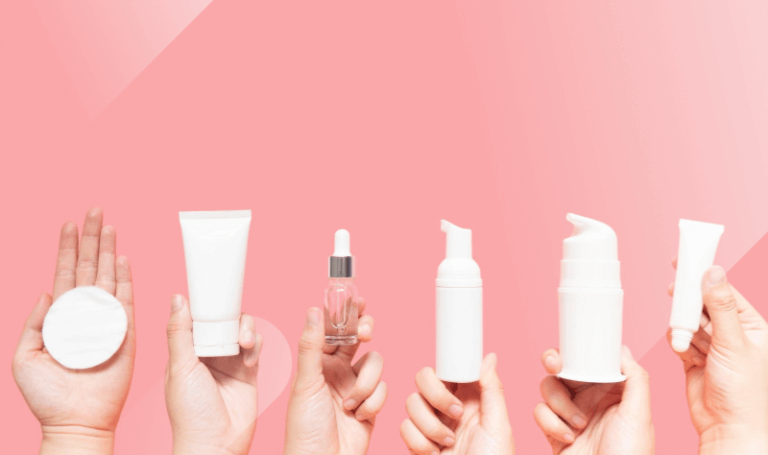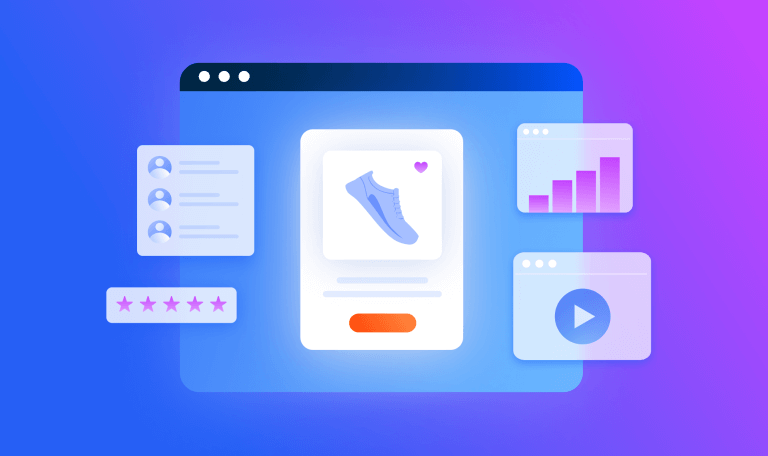Top 3 Beauty Industry Trends on Amazon

Revenue for Amazon’s Beauty & Personal Care category grew 58% year-over-year (YoY), bringing in $2 billion more than last year as of July. Despite reopened stores, consumers seem increasingly interested in the online marketplace to buy their favorite products. Our beauty and personal care expert Inès Durand teamed up with Glossy to pinpoint emerging beauty industry trends using Shopper Intelligence. Read on for highlights, including tips to succeed in the blossoming beauty space.
1. Men power fragrance, the fastest-growing subcategory
Fragrance revenue grew nearly 66% YoY hitting $318.6 million to make it the fastest-growing subcategory of Beauty & Personal Care. Unit sales growth (32.5% YoY) was less, indicating consumers are spending more per item.
Search trends for the beauty industry indicate increased consumer demand for perfume, with more than half of the fastest-growing keywords relating to men’s fragrances. In order of growth, these include:
- “Dior sauvage”
- “Perfumes for men”
- “Cologne for men”
- “Men cologne”
- “Versace eros”
- “Mens cologne”
Accordingly, revenue growth for men’s fragrances exceeded women’s for most of the year. Spikes in the warmer months, particularly July, are likely due to an increased need to mask body odors.
However, the biggest spike occurred in April, which marked the height of lockdowns last year. With the rollout of vaccines happening this year, consumers likely felt more motivated to level sweet smells, hoping to interact with other people.
Top fragrance brands lean into luxury
Armaf, a men’s fragrance brand, and Vera Wang, for women, won for the most revenue growth, at 85% and 82% respectively. Also of note, both tout moderate price points at around $22.00 a bottle.
Many other top brands fall into the luxury category, including Versace (+66%), Ralph Lauren (+61%), Davidoff (+58%), and Christian Dior (+42%), showing that consumers increasingly turn to Amazon for high-end beauty.
Takeaway
Fragrance brands may want to consider ramping up PPC in the warmer months when revenue rises. Luxury labels that aren’t on Amazon should consider entering the online marketplace to meet consumers where they are.
2. Cosmetic trends balance drugstore and luxury brands
The focus isn’t all on fragrance, however. Even though many consumers continue to wear masks, luxury products are becoming more popular in the makeup subcategory. Revenue grew 54% YoY, not far behind Fragrance.
Revenue growth for high-end cosmetic brands was more substantial, averaging 135% YoY.
Half of the top 10 fastest-growing brands carry luxury makeup, including URBAN DECAY, which had the most overall growth (394%), Grande Cosmetics (263%), Estee Lauder (82%), Clinique (77.5%), and Benefit Cosmetics (43%).
According to the ASIN Amazon Standard Identification Number) data, prices of the 24 top-selling luxury products average $24.90, a slight YoY decline (-0.96%).
This price point is nearly $20 more than the average price ($7.90) of the 102 top-selling drugstore beauty brands on amazon.com. Unlike luxury labels, drugstore brands have traditionally been popular, with Essence (+133%) and e.l.f cosmetics (+129%) taking a continual lead. They are also two of the year’s fastest-growing brands.
Cosmetic trends: All about eyes
When consumers went into mask mode, eye makeup suddenly became increasingly important. “Eyeshadow,” “eyeliner,” and “eyebrow pencil” were among the top 10 fastest-growing keywords, with searches increasing a whopping 99.8%, 119.4%, and 83.1% YoY respectively.
Interestingly, searches for “eyeshadow palette” dipped by 3.7%, indicating that consumers favor individual eye products over multi-colored palettes. This may be due to less travel and activities outside the home, and thus, less need for multiple colors in one container.
Takeaway
Makeup items need to be replenished regularly. As consumers increasingly look to amazon.com for cosmetics, brands should consider enrolling in Subscribe and Save, Amazon’s subscription program that enables shoppers to sign up for regular shipments of their favorite products at a discount.
Though discounts come out of brands’ pockets, the program lowers customer acquisition costs and ensures recurring revenue.=
Subscribe and Save is already becoming more popular in Amazon’s makeup category. The percentage of category revenue generated through Subscribe and Save grew by over 3% from January ( 7.6%) to July (10.8%) reflecting stronger customer loyalty.
As Amazon becomes more recognized as a makeup marketplace that offers products at a variety of price points, we suspect that Subscribe and Save rates will continue to go up.
3. Hair coloring recedes: Consumers prefer salons
Hair color rose just 6.9% YoY, the least among Amazon Beauty & Personal Care subcategories, likely due to the reopening of salons. Unlike most beauty and personal care products, many hair dyes exhibit noxious fumes and make a mess-issues that are instantly mitigated at a beauty salon. Because many salons still require the use of masks, customers likely feel safer and more encouraged to make an appointment.
Semi-permanent dye is fading out
Of those that continue to buy hair color, we see large dips in semi-permanent dye in particular. Clicks for “arctic fox hair dye,” (a brand that specializes in semi-permanent products), for instance, declined 53% while “semi-permanent hair color” clicks declined 44%.
Between lockdowns and layoffs, consumers felt more inspired to experiment with the semi-permanent dye. As we get closer to seeing a light at the end of the pandemic, that trend is in reverse.
Takeaway
With at-home hair coloring products on the plunge, brands that specialize in these products may want to scale down PPC investments and allocate this money to products that better align with current beauty market trends.
Conclusion
Once consumers got a taste of online shopping for beauty and personal care, they were hooked. Despite store reopenings, it’s more important than ever for brands to perfect their eCommerce strategy.
Reach out for a demo of Shopper Intelligence, the tool we used to pull our Amazon insights, or, Research Intelligence, to sculpt and define your eCommerce strategy and gain a clear picture of the full online consumer landscape.
For more on the online beauty industry check out these recent articles:
- How Consumer Behavior Impacts Amazon Best Selling Beauty Products
- Ulta vs. Sephora – Which is the Best Fit for Your Brand? (+ Top Brands Ranked)
- What Beauty Brands Can Learn From the Estee Lauder- Deciem Deal
- Top 10 eCommerce Trends to Watch in 2022
The ultimate edge in retail insight
Put the full picture at your fingertips to drive product views and sales











